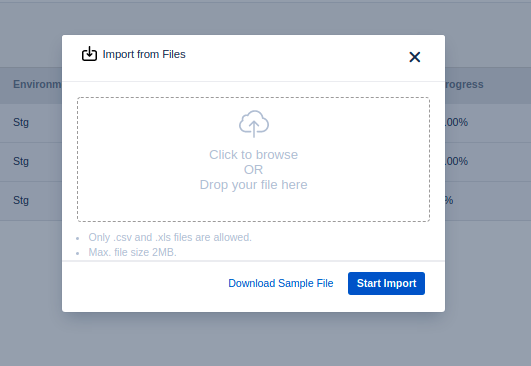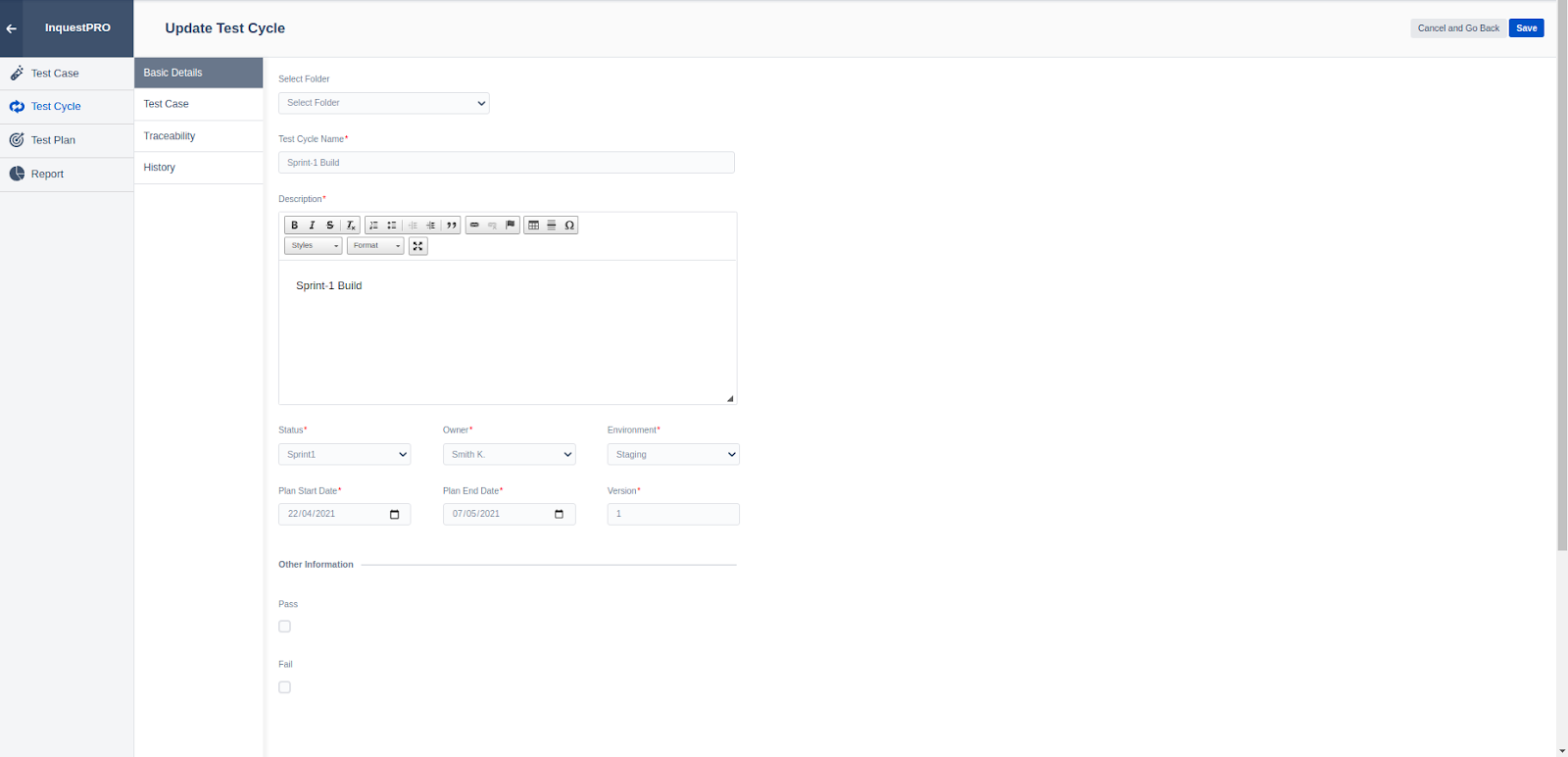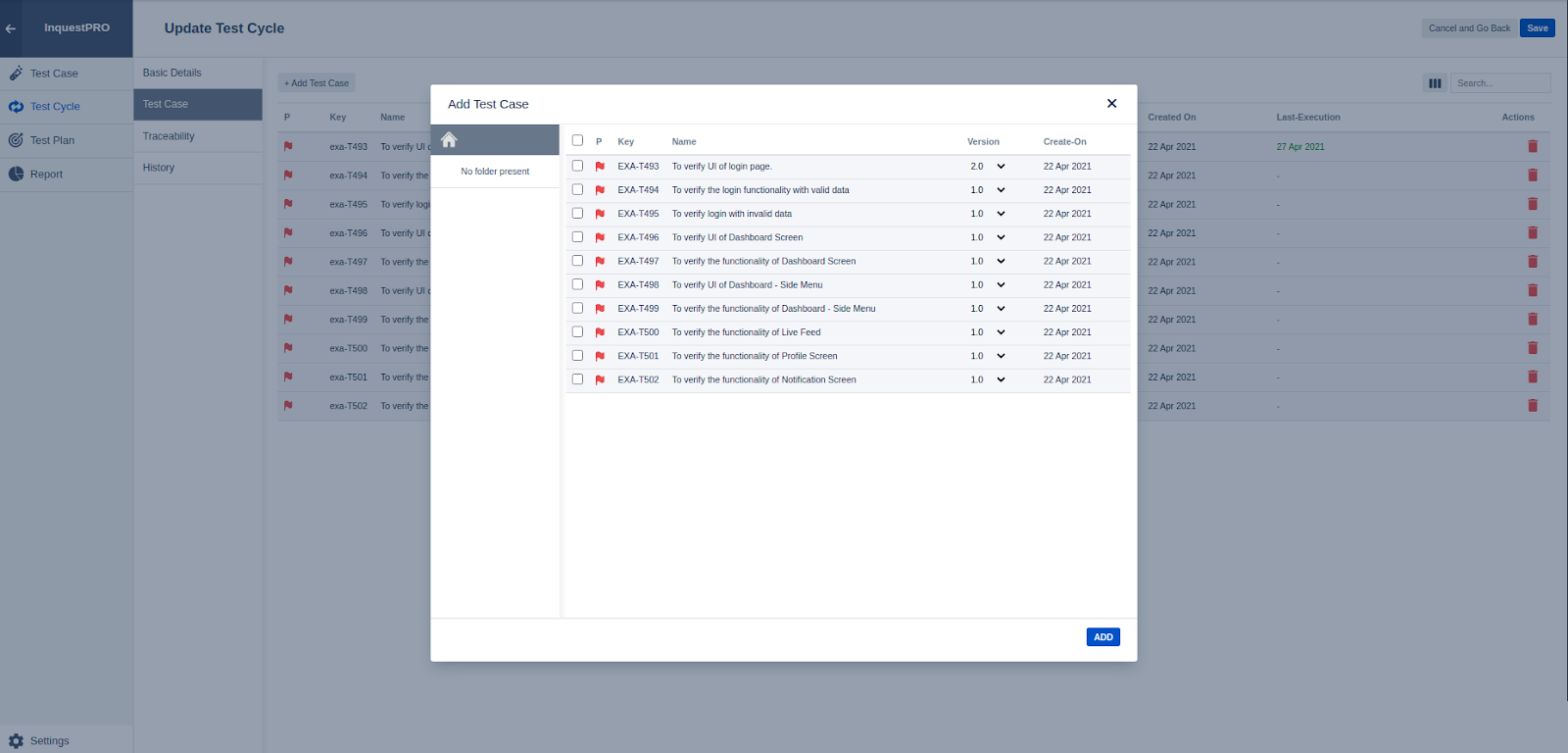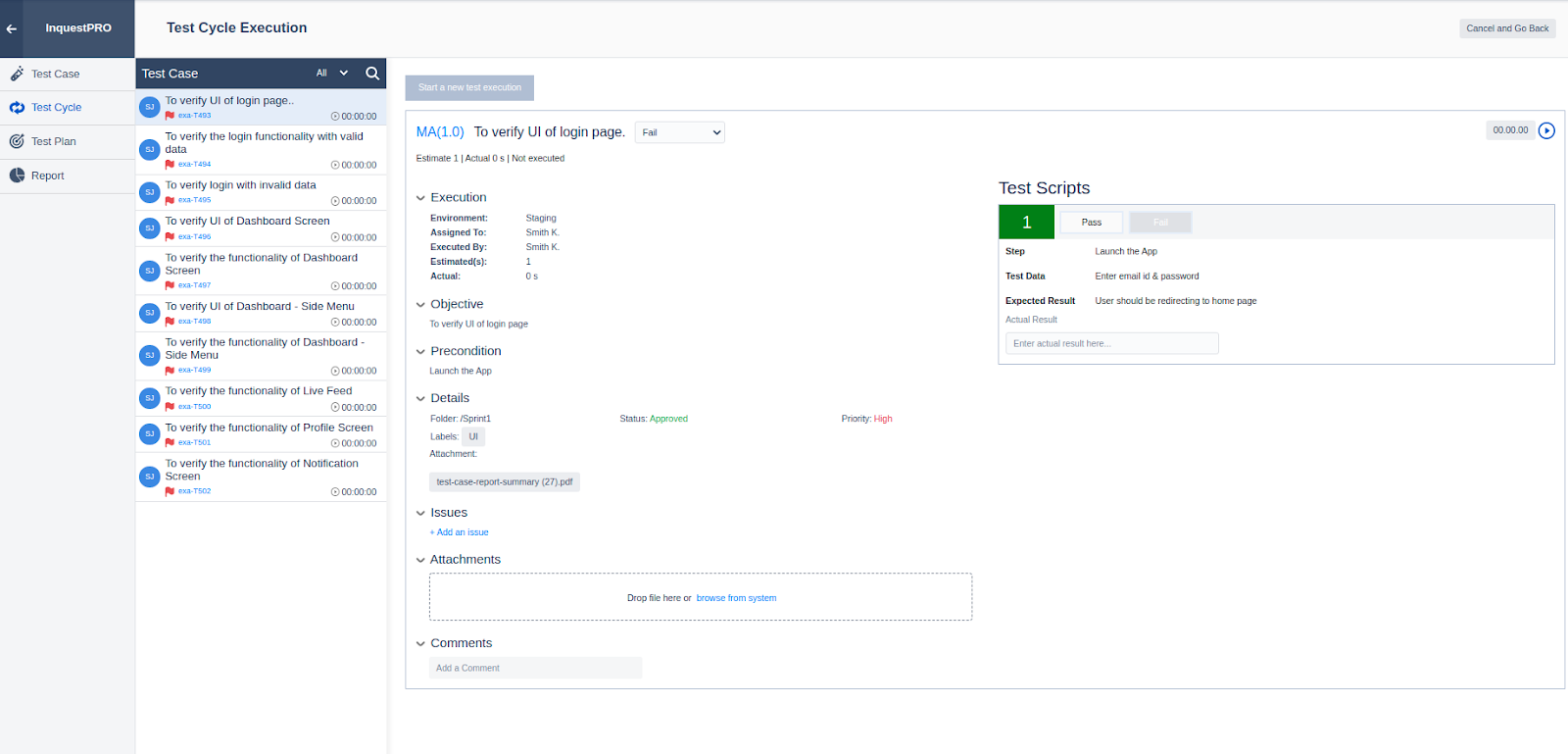# Test Cycle
A test cycle groups in a set of test cases that fulfill a specific testing goal. Test cycles by design implement a broader scope than test cases, and can be assigned to specific testers. In essence, test cycles convert groups of test cases into a series of test runs that are ready for execution.
# Test Cycle List

This is the Test Cycle listing Page.
In the Test Cycle listing screen we have various activities to be performed as follows :
Folder Creation : On clicking "Create New Folder icon, a text box appears where we enter a Folder name and click on the tick mark to create the folder.
Cancel to revert the folder creation action.
The Test Cases can also be created inside the selected Folder
Folder Action (Edit and Delete): once you have created the folder use the ellipses to edit or delete
Edit will give you the same interface like create The number of test cycles in each folder appears after the folder name
On the top of the sidebar, a home button redirects the user to the root directory or folder
Top right action bar
- Test Cycle Table Column Sort

Show/hide columns according to user preference
- Test Cycle Custom Filter

Sort the current test cycle list based on different column values Multiple column sort is supported . Users may sort filter with certain criteria for future use by clicking "Choose saved filter"
2 more options to edit and delete the saved filter are available. Users may filter by its type

While creating or edit users can set the visibility option to be "public" or "private"
- Test Cycle Search Box
This is the client-side searching for the current test cycle list by their names
- Test Cycle Multiple Export/Import Option in CSV/Excel Format

The import feature has a sample file available for users to import test cycles
Users can export test cycle in two different formats
# Test Cycle
Create Test Cycle Button This button redirects the user to a new screen for creating the test cycle.
Below CRUD Operations can be performed on the test cases listed
Edit Test Cycle Will present the user with existing test cycles which they may edit
Clone Test Cycle users can clone a test cycle and the name of the new cloned test cycle will be "[cloned test cycle Name]-clone" to easily differentiate between the old and newly cloned test cycle
Delete Test Cycle
Execute Test Cycle
# Test Cycle Basic Details
Users can create a test cycle by filling in all mandatory details.

"Status" and "Environment" values are presented from the configuration section.
Users may also add a custom field to the test cycle.
# Test Cycle Add Test Case

Users can attach test cases to be executed inside a test cycle.
WARNING
For a Test Case to be added to a Test Cycle, make sure the Status of the Test Case is set to Approved
# Test Cycle Traceability

Attach existing or create a new issue. The ability to create a weblinks or attach a test plan is also available
# Test Cycle History

Users can see all history related to a specific test cycle and view an audit trail of changes by user.
# Executing or Running a Test Cycle
In the test cycle listing page, a play icon is available for executing a Test Cycle.
Click on the play icon to open the test player screen.

In the Test Player screen, users can initiate the execution of the test case.
In the Test Player, users can update the status and start the test-execution timer.
Click Pass, Fail, Blocked, In Progress , Not Executed on the Test Scripts section

In the Test Player screen, on the left side, we can see all test cases associated with the test cycle. We can also perform multiple executions of test cases. In this, we also have started a new execution button. This archives the previous test execution result and allows us to start testing from scratch.
In the Test Player screen, we can also view archived test execution.